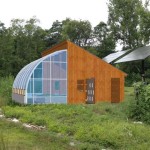Finding Large Indoor House Plants Near You: A Guide to Transforming Your Space
The incorporation of large indoor house plants has become increasingly popular, driven by their ability to enhance aesthetics, improve air quality, and contribute to an overall sense of well-being. The term "Large Indoor House Plants Near Me" reflects the common desire to find local sources for these botanical additions, ensuring convenient access and often, better acclimation to the local climate. This article will explore the benefits of large indoor house plants, factors to consider when selecting them, and strategies for locating reputable sources in your vicinity.
The advantages of cultivating large indoor plants extend beyond mere decoration. These plants function as natural air purifiers, absorbing harmful toxins such as formaldehyde, benzene, and xylene, that are commonly found in indoor environments. Through the process of photosynthesis, they convert carbon dioxide into oxygen, contributing to a healthier and more breathable atmosphere. Furthermore, studies have indicated that the presence of plants can reduce stress levels, improve mood, and increase productivity. Their visual appeal also contributes to a more calming and inviting interior space.
The accessibility of finding "Large Indoor House Plants Near Me" is crucial for several reasons. Purchasing from local nurseries or plant shops increases the likelihood of acquiring plants that are already adapted to the regional climate and growing conditions. This reduces the stress of acclimation and improves the plant's chances of thriving in its new indoor environment. Additionally, local vendors can provide personalized advice and support based on their expertise and understanding of the specific varieties they offer.
Considering Light, Space, and Maintenance
Before embarking on the search for large indoor house plants, it is essential to assess the available light, space, and your commitment to ongoing maintenance. Different plant species have varying light requirements, ranging from bright, indirect light to low-light conditions. Accurate assessment of the light levels in your home or office is crucial for selecting plants that will flourish in the designated location. Insufficient light can lead to stunted growth, pale foliage, and a general decline in health.
The amount of available space is another critical factor. Large indoor plants can quickly outgrow their initial containers and require ample room to spread their roots and foliage. Consider the mature size of the plant and ensure that the chosen location can accommodate its growth habit. Overcrowding can restrict airflow and create conditions conducive to pest infestations and fungal diseases.
Maintenance requirements vary significantly among different plant species. Some large indoor plants are relatively low-maintenance, requiring infrequent watering and minimal fertilization. Others may demand more attentive care, including regular pruning, repotting, and pest control. It is important to select plants that align with your available time and expertise. Neglecting the needs of a high-maintenance plant can result in disappointment and ultimately, the plant's demise.
For example, a Fiddle Leaf Fig (Ficus lyrata), a popular choice for its striking foliage, requires bright, indirect light and consistent watering. It is also sensitive to changes in its environment and may drop its leaves if exposed to drafts or sudden temperature fluctuations. In contrast, a Snake Plant (Sansevieria trifasciata) is a low-maintenance option that can tolerate low light conditions and infrequent watering. It is also known for its air-purifying qualities and resilience to neglect.
The choice of potting mix is equally important. Most indoor plants thrive in a well-draining potting mix that provides adequate aeration and moisture retention. Avoid using garden soil, which can become compacted and impede drainage. Consider using a commercially available potting mix specifically formulated for indoor plants, or create your own blend by combining peat moss, perlite, and vermiculite.
Watering is perhaps the most crucial aspect of indoor plant care. Overwatering is a common mistake that can lead to root rot and other problems. Allow the top inch or two of soil to dry out between waterings, and ensure that the pot has adequate drainage holes. The frequency of watering will depend on the plant species, the size of the pot, and the environmental conditions.
Fertilizing your large indoor plants is essential for providing them with the nutrients they need to thrive. Use a balanced fertilizer specifically formulated for indoor plants, and follow the instructions on the label. Avoid over-fertilizing, which can burn the roots and damage the plant. During the winter months, when plant growth slows down, reduce or eliminate fertilization.
Identifying Local Sources for Large Indoor Plants
The search for "Large Indoor House Plants Near Me" can be approached through various avenues, including local nurseries, garden centers, online retailers, and even community marketplaces. Each option offers its own advantages and disadvantages.
Local nurseries and garden centers provide the opportunity to physically inspect the plants before purchasing them. This allows you to assess their overall health, structural integrity, and potential for growth. Furthermore, the staff at these establishments can offer valuable advice and guidance on plant selection, care, and maintenance. Supporting local businesses also contributes to the economic vitality of the community.
Online retailers offer a wider selection of large indoor plants, including rare and exotic varieties that may not be readily available at local stores. However, purchasing plants online involves some risk, as you cannot personally inspect them before they are shipped. It is important to choose reputable online retailers that offer guarantees and have a proven track record of delivering healthy plants.
Community marketplaces, such as Facebook Marketplace and Craigslist, can be a source for finding gently used or propagated plants at discounted prices. However, it is important to exercise caution when purchasing plants from these sources, as the seller may not have the expertise to provide accurate information or ensure the plant's health. Inspect the plant carefully before making a purchase, and ask the seller questions about its care and history.
When evaluating potential sources for large indoor plants, consider the following factors: reputation, selection, pricing, and customer service. Read online reviews and check with friends or neighbors for recommendations. Compare prices among different retailers to ensure that you are getting a fair deal. Assess the quality of the customer service and the willingness of the staff to answer your questions and provide support.
Consider visiting botanical gardens or public parks in your area. These locations often feature a variety of large indoor plants, providing inspiration and ideas for your own indoor garden. You can also learn about the different species and their care requirements by observing them in a controlled environment.
Popular Large Indoor Plant Choices and Their Care
Selecting the right large indoor house plant depends on your individual preferences, the available space, and the environmental conditions in your home or office. There are many popular options to choose from, each with its own unique characteristics and care requirements.
The Fiddle Leaf Fig (Ficus lyrata) is a popular choice for its large, textured leaves and architectural form. It requires bright, indirect light and consistent watering. Avoid overwatering or exposing it to drafts, as this can cause it to drop its leaves. Regular pruning can help maintain its shape and encourage new growth.
The Monstera deliciosa, also known as the Swiss Cheese Plant, is another popular option for its distinctive foliage with its signature holes and splits. It can tolerate a wide range of light conditions, but thrives in bright, indirect light. Water it when the top inch of soil is dry, and provide it with a support structure, such as a moss pole, as it grows.
The Snake Plant (Sansevieria trifasciata) is a low-maintenance option that is known for its air-purifying qualities. It can tolerate low light conditions and infrequent watering. Avoid overwatering, as this can lead to root rot.
The ZZ Plant (Zamioculcas zamiifolia) is another low-maintenance option that is well-suited for beginners. It can tolerate low light conditions and infrequent watering. Its glossy, dark green leaves add a touch of elegance to any space.
The Bird of Paradise (Strelitzia reginae) is a tropical plant that produces striking, bird-like flowers. It requires bright light and consistent watering. Its large leaves can add a dramatic touch to any room.
The Kentia Palm (Howea forsteriana) is a graceful palm that is well-suited for indoor environments. It can tolerate low light conditions and moderate humidity. Water it when the top inch of soil is dry, and provide it with occasional fertilization.
The Rubber Plant (Ficus elastica) is a resilient plant that is known for its glossy, dark green leaves. It requires bright, indirect light and consistent watering. Regular pruning can help maintain its shape and encourage new growth.
The Dragon Tree (Dracaena marginata) is a slow-growing plant that is known for its slender, upright stems and spiky leaves. It can tolerate low light conditions and infrequent watering. Avoid overwatering, as this can lead to root rot.
When selecting a large indoor house plant, consider its mature size, its light requirements, its watering needs, and its overall maintenance requirements. Choose plants that align with your available time and expertise, and ensure that the chosen location can accommodate their growth habit. With proper care and attention, large indoor house plants can bring beauty, health, and tranquility to your living space.

Tumbleweed Plants Singapore S Boutique

Tumbleweed Plants Singapore S Boutique

Best Indoor Plants Singapore Low Light Large Jm Flower

9 Local Plant Pas On Instagram To Follow For Home Gardening Inspiration

Best Indoor Plants To Add Life Your Abode

5 Best Large Indoor Plants That Make A Statement Flower Power

Best Indoor Plants Singapore Low Light Large Jm Flower

Buy Large Indoor Plants Eureka Farms

Happy Houseplants Low D Indoor Plants Buy Now

House Plants At Com








